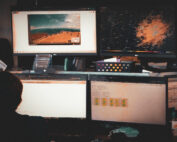The Polar Vortex
2014-02-25 18:39:23.000 – Tom Padham, Weather Observer/Meteorologist
As Sam alluded to, the deep freeze has returned to the higher summits, and it looks to stay through the next several days across nearly all of New England. Temperatures on the summit fell to 15 below this morning, and the forecast calls for the summit to remain below zero until at least Saturday! While this cold spell will not be as strong as the one we saw during the month of January, when the summit dropped to 26 below, we still could see temperatures approach 20 below on Thursday, Friday, and even Saturday.
So is this recent cold snap another case of the now infamous “polar vortex”? It is, in a way, but many people have developed a misconception of what the polar vortex is since our last major cold snap in January. The polar vortex is actually a semi-permanent area of low pressure that remains typically over far northern Canada year round. There are actually several polar vortices on our planet, with another typically found over Siberia and another over coastal Antarctica. These areas of low pressure strengthen during the winter season as colder air builds across the arctic from the loss of daylight. A strong polar vortex actually tends to keep the coldest arctic air bottled up over Canada, but in cases when the vortex weakens, the jet stream can meander into a higher amplitude pattern (more like an “S” on its side), allowing large areas of much colder air to push into regions that do not typically see arctic air like the Northeastern United States.
For a visualization of how the polar vortex can break down and allow arctic air into our latitude, check out the images here, and here. The first image is the “normal” polar vortex, with the deep purple shading indicating the center of the vortex. The second image shows what was a single polar vortex over Canada weakening to more than one area of low pressure with very cold air moving south as indicated by the white and purple areas.
So in short, the polar vortex is not a new phenomenon, its actually pretty permanent. While we have seen some unusually strong cold spells this winter, this is not an incredibly rare event; and is fact something that happens a few times per year to varying degrees.
Tom Padham, Weather Observer/Meteorologist
Inside the Weather Room: How Mount Washington Observers Monitor the Atmosphere
Inside the Weather Room: How Mount Washington Observers Monitor the Atmosphere By Karl Philippoff As a weather observer on Mount Washington, we take our hourly observations on the observation deck, usually heading out between
From Weather Observer to Intern, to Observer Again
From Weather Observer to Intern, to Observer Again By Madelynn Smith As I rode in the backseat of our Obs van up the Auto Road for the first time as a full-time employee at
From Mountains to More Mountains
From Mountains to More Mountains: This Time with Stronger Winds By Alyssa Bélanger On the observation deck in high winds. Hello there! My name is Alyssa Bélanger and I am a fall




